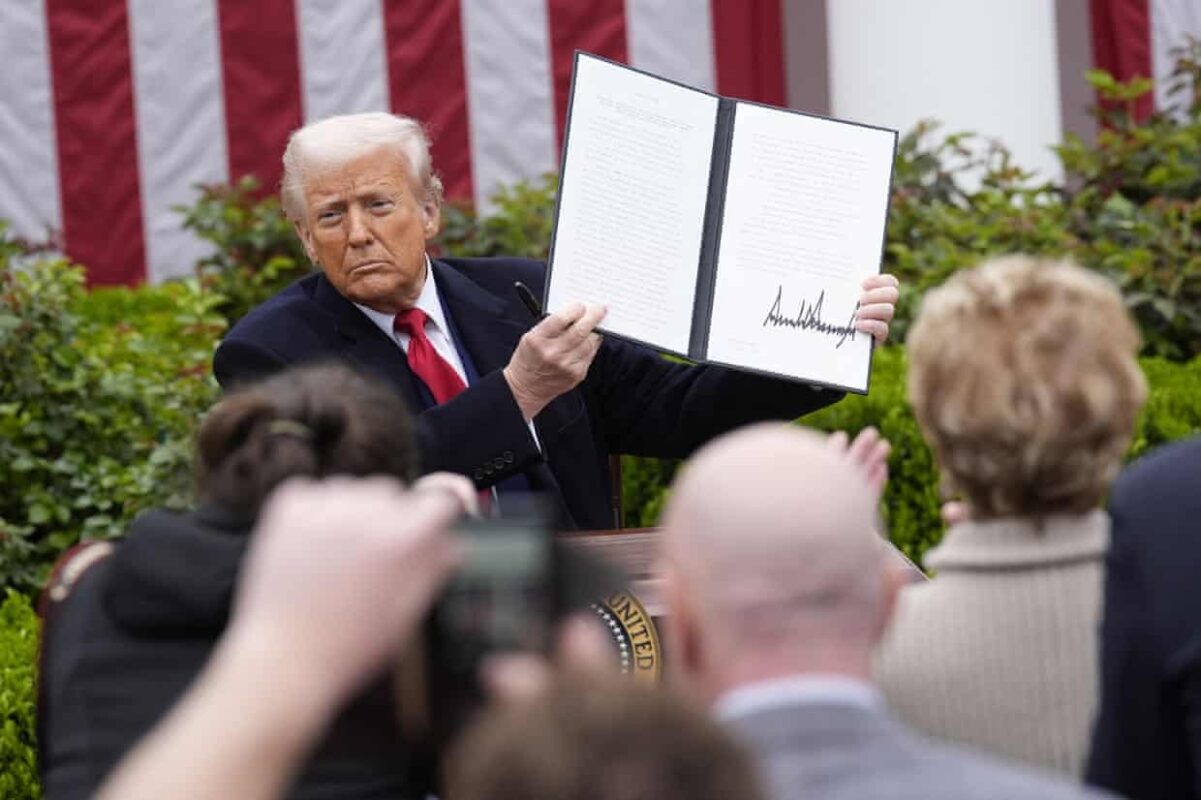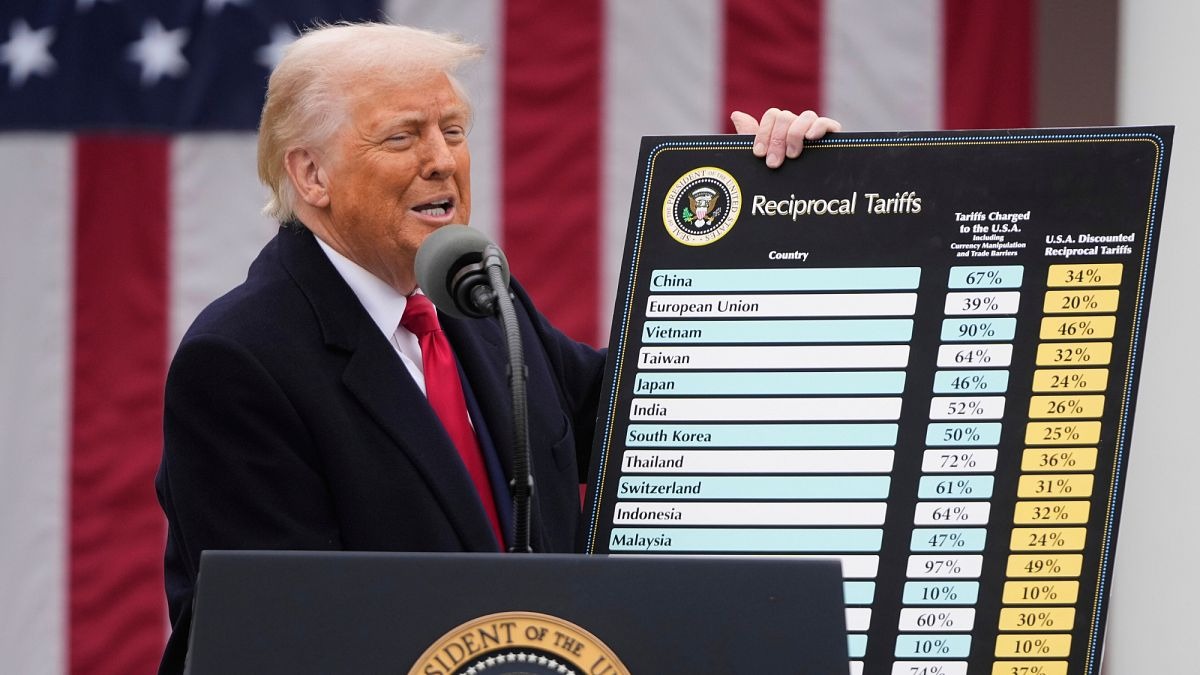News
Trump’s Tariffs: Key Takeaways and Global Impact
Trump’s Tariffs A Shift in US Foreign Policy
Donald Trump has dramatically altered US foreign policy by introducing a wide range of tariffs, threatening to disrupt international trade. Countries around the world are now adapting to these new measures, which could ignite a global trade war.
Trump’s tariffs are designed to achieve several objectives: bringing manufacturing jobs back to the US, countering unfair trade practices, increasing tax revenue, and pressuring countries on issues like migration and drug trafficking. However, the European Union (EU) and China have vowed to respond with countermeasures, while South Korea has promised an “all-out” reaction. Political tensions with allies such as the UK could also lead to economic consequences.
Below are the key points emerging from Trump’s latest tariff announcement.

1. US Businesses Brace for the Impact
Trump framed the tariffs as a way to “liberate” the US economy and fulfill his campaign promise of lowering prices. However, the reality may be different for American consumers. Many business leaders have expressed concern that these tariffs will increase costs, which will ultimately be passed on to customers.
Neil Bradley, chief policy officer at the US Chamber of Commerce, stated, “What we have heard from businesses of all sizes, across all industries, is that these broad tariffs are a tax increase that will raise prices for American consumers and hurt the economy.”
2. The China Connection
China has been one of the hardest-hit countries, with tariffs now pushing the total levy on Chinese imports above 50%. The effects also extend to South-East Asian countries, including Myanmar, which is already struggling due to conflict and natural disasters.
Some experts suggest that the real target of these tariffs is China’s overseas investments. Dr. Siwage Dharma Negara from the ISEAS-Yusof Ishak Institute in Singapore noted that by imposing tariffs on countries like Cambodia, Laos, Myanmar, and Indonesia, the US may be indirectly targeting China. These restrictions could significantly impact these nations, where Chinese investments create jobs and boost export revenue.
3. Canada and Mexico: Spared but Not Unscathed
While Canada and Mexico have been exempted from the latest tariffs, they are still feeling the effects of earlier 25% tariffs on steel, aluminum, and automobiles. Canadian Prime Minister Mark Carney warned that while key elements of the US-Canada relationship remain intact, the new global tariffs represent a fundamental shift in international trade.
Mexico has also faced previous tariffs, largely due to border control and fentanyl trafficking concerns. Despite this, Mexican President Claudia Sheinbaum stated that the country would not retaliate but instead introduce a comprehensive response strategy.
4. A High-Stakes Gamble
Trump has acknowledged that his sweeping tariffs will create significant market turbulence. “There is a period of transition, because what we’re doing is very big,” he stated.
The universal tariffs take effect on April 5, followed by reciprocal tariffs on April 9. This gives affected countries only a short window to decide whether to negotiate with the US, retaliate, or seek alternative trade routes. The situation remains highly unpredictable, leaving businesses and governments uncertain about the future.
5. No Country is Immune
Even the most remote territories are affected by Trump’s tariffs. Australia’s Heard Island and McDonald Islands, which are uninhabited except for wildlife, are subject to a 10% tariff. Meanwhile, Norfolk Island faces a 29% tariff—19 percentage points higher than mainland Australia.
Australian Prime Minister Anthony Albanese commented, “I’m not quite sure that Norfolk Island, with respect to it, is a trade competitor with the giant economy of the United States, but that just exemplifies the fact that nowhere on earth is safe from this.”
Conclusion
Trump’s tariffs mark a significant shift in US trade policy, with wide-reaching implications for global economies. While his administration aims to strengthen the US economy, the potential backlash from allies and affected nations could lead to economic instability and prolonged trade disputes. As the situation develops, businesses and governments alike will be closely watching the consequences of these bold new trade measures.
Homepage: Balenotee

